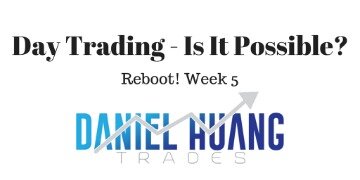21 Jan 11 chart patterns you should know when trading
Contents:

The appearance of chart formation patterns patterns in the chart makes it difficult to predict the price movement, since there are three types of this chart pattern. This chart pattern occurs on various timeframes and is suitable for intraday trading. The pattern can be found in almost all financial complex instruments. Say you’ve spotted a bullish flag pattern, and the market has broken through its resistance line. Instead of trading instantly, you’d wait a couple of candlesticks. If they’re green, it is more likely that an uptrend has started.
Swatch Group AG (SWGAY) May Find a Bottom Soon, Here’s Why … – Nasdaq
Swatch Group AG (SWGAY) May Find a Bottom Soon, Here’s Why ….
Posted: Tue, 28 Mar 2023 13:55:00 GMT [source]
It forms a U shape that resembles a cup and is accompanied by a short downward trend that makes up the handle. It’s considered a bullish reversal pattern and can be used for placing long positions right above the handle breakout. Next on our list of chart patterns for crypto trading is the diamond pattern. The diamond chart pattern signals a reversal in the general trend of the asset. Well, the answer is – it’s both, as the crypto diamond pattern can occur on either market tops or bottoms. That said, the bearish diamond pattern is much more common, and should be used as follows.
In the event the https://trading-market.org/ works in my favor, and the security continues to decline, I carefully consider whether or not to take on additional risk by scaling my position size up. This movement is usually 78.6% of XA and completes the Gartley pattern. Funded trader program Become a funded trader and get up to $2.5M of our real capital to trade with. Beginners should stick with the patterns that are easiest to understand and have the highest success rates.
Rounding Top and Bottom Formation
It involved the buyers, who expected a growth from support, into longs, but they were wrong. This failure of the buyers added a bearish potential to the downsloping trend, which lasted until the middle of August. The chart patterns are symmetrical, which means that there is always a reversed analogue. The same patterns can have different percentage of failures and movement potential in the bear and bull markets. We have looked at the most popular chart patterns here and shown you how to identify these different patterns.
- This means that if a rectangle chart pattern forms in an uptrend, traders will look to place buy orders after the horizontal resistance is breached.
- Cryptocurrency trading, indicating that a trend may be about to change direction.
- Once confident in your chart pattern trading abilities, you may wish to upgrade to a fully funded live account to profit from your new trading edge.
One way to confirm an ascending triangle is to look at volume indicators – activity should decline within the pattern, but then quickly pick up as the breakout takes hold. If this arises, then the price is more likely to continue upwards. Our online trading platform is also available on mobile and tablet devices, thanks to advancements in technology. Read more about our mobile trading applications and how you can browse stock chart patterns through our app when trading on-the-go. They are often formed after strong upward or downward moves where traders pause and the price consolidates, before the trend continues in the same direction. Horizontal or slightly sloped trendlines can be drawn connecting the peaks and troughs between the head and shoulders, as shown in the figure below.
How to Read Stock Charts and Trading Patterns
The handle should be a mild pullback on relatively light volume. It’s a shakeout of weaker holders — those not committed to holding the stock longer term. A sharp decline of more than 12%-15% on heavy volume could indicate a more serious sell-off that might prevent the stock from launching a successful move. The depth of the base — measured from the peak on the left side of the cup to the lowest point of the cup — should be between 15% and 30%. As a general rule, look for stocks that held up relatively well during the market correction.
- Once the resistance point is identified, place an ascending line along the support points.
- The final third trend wave was much shorter and also just barely broke the previous high – we also saw more price wicks which are another rejection and exhaustion signal.
- Chart patterns are an integral aspect of technical analysis, but they require some getting used to before they can be used effectively.
- Looking for these chart patterns every day, studying the charts will allow the trader to learn and recognize technical trading strategies in the data and the implications that these patterns imply.
- Compared with other stock chart patterns, this one is used more often for longer time frames.
Note that Basic plan users get access to 1D interval, Essential users get access to 1D and 4H interval, and Premium users get access to patterns on all four intervals . Some of the simple patterns likeSupport and Resistancebreakout and approaches are among the most successful with win rates above 75%. Ideally, a price breakout is accompanied by an increase in volume. Hence, the increase in volume can confirm the validity of the price breakout.
Watch volume in this scenario, as it is likely to increase once the contract is below support. This support level may now become a new resistance level in the new trend. An descending triangle is formed when support remains flat as resistance drops. Learn to recognize different chart patterns with IBD home study programs. At the beginning of best-selling book How to Make Money in Stocks, IBD Founder and Chairman William J. O’Neil shows 100 charts of the top-performing stocks over the last 100+ years.
How many chart patterns are there?
The truth is there are scores of other charts analysts use to find price patterns to capitalize on. But they can be hard to spot and even harder to take advantage of. And it’s also worth mentioning that they are far from a “sure thing.” If stock patterns were always a crystal ball for the future, we’d all be much more adept at identifying them. The bullish variety is formed by strong upward movement followed by a tighter fluctuation in price. This happens when there is a lot of bullish interest in the stock , which is followed by a cooling off period. But if volume begins to pick back up, it can be an indicator that the momentum that carried the stock’s price upward is about to pick back up.
Like with reversal patterns, trading trend continuation patterns can be applied to both bullish and bearish situations. Bilateral chart patterns are those that can resolve in either direction, so can be both reversal chart patterns and/ or continuation chart patterns. This will depend on how the pattern is formed and how the price breaks out from the pattern.
Futures Trading Chart Patterns
However, they work just as good on daily charts too and are great for swing trading. And if you find this way of trading interesting, our trading courses also make use of the principles of advanced chart reading and much more. Past performance of a security or strategy does not guarantee future results or success.

They occur when there is space between two trading periods caused by a significant increase or decrease in price. For example, a stock might close at $5.00 and open at $7.00 after positive earnings or other news. An uptrend interrupted by a head and shoulders top pattern may experience a trend reversal, resulting in a downtrend. Conversely, a downtrend that results in a head and shoulders bottom will likely experience a trend reversal to the upside.
Then, should the trend resume, the price increase could be rapid, giving anyone that can notice the pattern a massive advantage to time their trades appropriately. To play these chart patterns, you should consider both scenarios and place one order on top of the formation and another at the bottom of the formation. For continuation patterns, stops are usually placed above or below the actual chart formation. Determine significant support and resistance levels with the help of pivot points. To preserve your capital, it is important to set stop losses and stick to your own risk management strategies developed in compliance with your risk tolerance level. This will help minimize losses and protect your retail investor accounts.
After the consolidation of the asset in the side channel, the quotes break through the neckline level upwards and move in a corrective upward dynamics to the height of the formed pattern. The cup and handle chart pattern is a continuation of an primary trend in the upward direction, however, it can also be a bearish trend reversal chat pattern. Some traders even choose to enter short-term trades within the wedge pattern, taking smaller profits from the oscillations between support and resistance. Technical analysis is one of the best tools traders can use to spot shifts within the market, allowing them to predict support and resistance levels within a predictable timeframe.
Day Trading Guide
Contrarily, reversals at market bottoms are accumulation patterns, where the security becomes more fervently bought than sold. To trade these patterns, simply place an order above or below the formation . Learn how to trade forex in a fun and easy-to-understand format. Finally, it is important to stay calm and avoid impulsive trading decisions. By staying calm and following a well-defined trading plan, you can increase your chances of success in day trading. After the formation of the second bottom, the asset rushed towards the resistance, which it overcame and tested again, consolidating higher.
After the second rejection, a double top trading pattern is formed. Your short target price will be the difference from the support to the resistance. In this case, it equates to ~$5000, so your price target would be around ~$53.000 after the support is broken at ~$58.000.

Finally, the trend will reverse and begin an upward motion as the market becomes more bullish. As you can see above, as a stock’s price support line grows closer to the resistance line, it can indicate that a serious upward trend is on the horizon. In this case, anyone who buys near the middle of the “U” shape should be in for a boon to their portfolio.
A key characteristic of pennants is that the trendlines move in two directions—one will be a down trendline and the other an up trendline. Often, the volume will decrease during the formation of the pennant, followed by an increase when the price eventually breaks out. A continuation pattern can be considered a pause during a prevailing trend. This is when the bulls catch their breath during an uptrend or when the bears relax for a moment during a downtrend.



Sorry, the comment form is closed at this time.